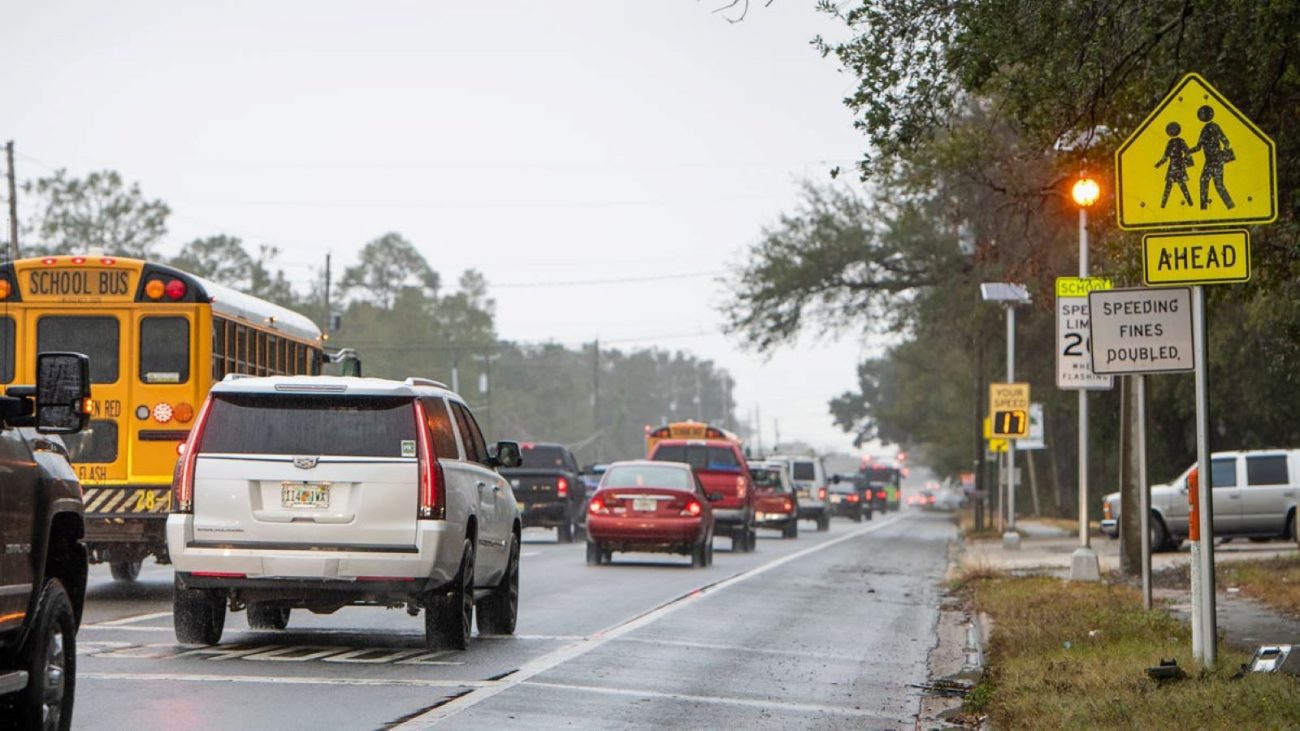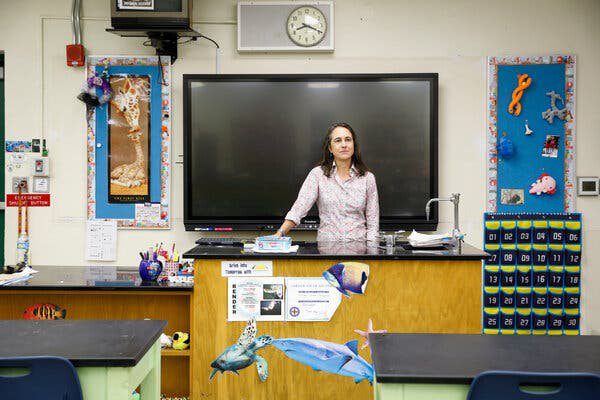Pensacola legislators, advocates say this bill will help kids get to school safely
Pensacola News Journal | Madison Arnold | January 26, 2021
If a child in Florida has to walk to school on a road without a sidewalk that sees as much traffic as one car passing every 10 seconds, that scenario isn’t considered hazardous walking conditions under the current law.
Conditions like that are why Rob Doss, a retired transportation director for the Escambia County School District, wants to change the state law through a proposed bill in the Florida Legislature. He hopes the new bill will lead to redefining what hazardous walking conditions are for students.
“If you can imagine a child of any age walking on a road and it not being considered hazardous unless a vehicle passes by every 10 seconds, it’s really kind of absurd when you look at it. When you turn it into a real-life scenario, that’s when it really becomes unbelievable,” Doss said. “It’s just unrealistic and impractical.”
If students live two miles or more from their schools, school districts receive state funds to transport them to school, usually covering about 40% of the cost of transportation.
For children who live within two miles, buses can pick them up if their walking conditions are deemed hazardous, and the district can receive state funds until the hazard is fixed. Even then, only children through the sixth grade are eligible for the state funding.
What is considered hazardous walking conditions?
The stipulations for hazardous walking conditions are written out in Florida Department of Education code. But Doss, who has been working to get a bill passed on the topic for about a decade, said they are too weak.
Under the current law, walkways parallel to roads are considered hazardous unless they have a surface to walk on that’s at least 4 feet wide. But there are a number of exceptions, including if the walkway is in a residential area with little to no transient traffic, on a road where the volume of traffic is less than 180 vehicles per hour per direction or in a residential area that has a speed limit of 30 miles per hour or less.
It’s also considered hazardous for students to cross intersections if the traffic volume on the road exceeds the rate of 360 vehicles per hour per direction and is uncontrolled. An intersection is considered uncontrolled if there is no crossing guard, traffic enforcement officer, stop sign or other traffic control signal when students walk to and from school.
Another example in the current law that Doss pointed to as a concern is that an intersection isn’t considered hazardous for children to cross until it exceeds 4,000 cars in an hour. But if a crossing guard or other traffic enforcement officer is present, that same intersection is no longer deemed hazardous.
The Safe Walkways to School Act proposes that a new set of criteria for safe walking conditions for minors be created by engineering professionals at the Florida Department of Transportation, instead of the education department. If any walkways are deemed hazardous under the new criteria, then districts would be eligible to receive state funding to bus children in those areas.
“Fundamentally, we have a responsibility to make sure that our kids can have safe access to school. So you have a federal and state requirement for them to attend school but do we provide them safe access to school? And the answer is quite often not,” Doss said.
Doss said the bill tasks professionals at FDOT with developing new standards in the hopes that those would better protect students than the current criteria. The department already develops similar standards for its Florida Greenbook, a guide for minimum standards for construction.
Some school districts, including Escambia County, choose to bus students who do have potentially dangerous routes to school that aren’t legally considered “hazardous,” but the district must absorb 100% of those costs. While those students are safe, it doesn’t necessarily mean that’s happening all around the state.
Escambia County buses 1,646 students who had walkways deemed to be hazardous under the current state law. It also buses another 4,572 students who are ineligible for the state funding under the current law, according to the district’s most recent transportation profile report published by the Department of Education.
The district received $8,520,260 in state funding for busing in 2018-2019, but its total expenditures that same year totaled $19,324,952, according to the report.
‘We’re asking these kids to sort of cheat death every day’
Doss is particularly concerned about how the hazardous walking conditions affect low-income neighborhoods, many of which don’t have neighborhood associations or the political clout to pressure their communities to build better sidewalks, Doss said.
That puts parents in a difficult position if they don’t have the resources to transport their children to school themselves and their district chooses not to bus them. Doss gave the example in Pensacola of children who live in the Truman Arms apartment complex who would have to cross Fairfield Drive or W Street to get to CA Weis Elementary.
“We’re asking these kids to sort of cheat death every day if they walk to school or can’t get there some other way or if the district hadn’t decided to transport them,” Doss said.
Some school districts, including Escambia County, choose to bus students who do have potentially dangerous routes to school that aren’t legally considered “hazardous,” but the district must absorb 100% of those costs. While those students are safe, it doesn’t necessarily mean that’s happening all around the state.
Escambia County buses 1,646 students who had walkways deemed to be hazardous under the current state law. It also buses another 4,572 students who are ineligible for the state funding under the current law, according to the district’s most recent transportation profile report published by the Department of Education.
The district received $8,520,260 in state funding for busing in 2018-2019, but its total expenditures that same year totaled $19,324,952, according to the report.
‘We’re asking these kids to sort of cheat death every day’
Doss is particularly concerned about how the hazardous walking conditions affect low-income neighborhoods, many of which don’t have neighborhood associations or the political clout to pressure their communities to build better sidewalks, Doss said.
That puts parents in a difficult position if they don’t have the resources to transport their children to school themselves and their district chooses not to bus them. Doss gave the example in Pensacola of children who live in the Truman Arms apartment complex who would have to cross Fairfield Drive or W Street to get to CA Weis Elementary.
“We’re asking these kids to sort of cheat death every day if they walk to school or can’t get there some other way or if the district hadn’t decided to transport them,” Doss said.
Salzman said she hopes the bill will free up some of the funding that the school district currently uses on busing to instead spend in classrooms.
“When I became elected, Rob (Doss) was like ‘We need somebody to carry this bill.’ And I said, ‘I’m all in,'” Salzman said. “It’s one of those things that’s going to make people do what they’re supposed to do. We’re going to fight real hard. If we get lucky, it’ll pass the finish line. But if it doesn’t, then we’ll file it again next year, you know? We’ll keep trying because it’s much needed.”
Andrade said he took up interest in the bill in part because Doss is someone from his “backyard” who isn’t a lobbyist or has a financial interest in the matter.
“I just hope we can actually start having a more honest conversation about what’s safe and what’s not safe for a child who walks. We should absolutely be doing our best to one, encourage more kids to walk to school; two, stop kidding ourselves that a lot of our streets are safe for a child to walk to school on; and three, realize a standard …,” Andrade said.






